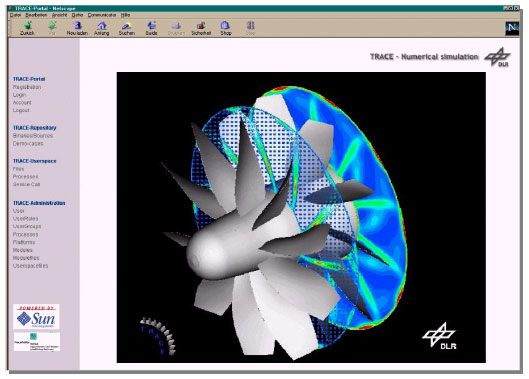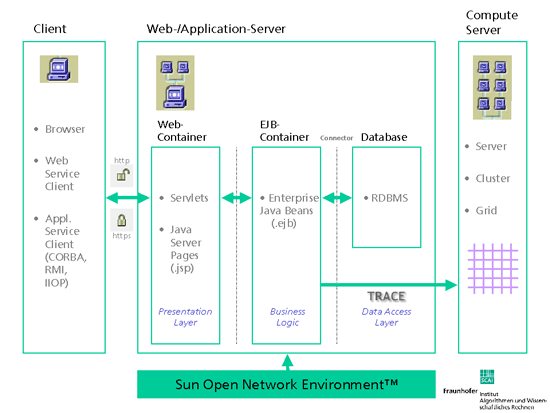|
|||||
Numerical Simulation through Web Servicesby Stephan Springstubbe, Jürgen Klein and Ottmar Krämer-Fuhrmann Simulation portals provide secure access to data and the use of different analysis and simulation tools via Internet. Benefits are a safe access independent of location or time, personalized services with an adequate user support, and modern security methods like certificate authentication or encryption. Thus simulation portals meet industrial requirements in a 'portable' environment. The expansion of the Internet and the development of secure access and communication methods enable a new and integrative usage of simulation tools. Web portals offer the integration of data, applications, services and resources in a personalized environment. The Internet or Intranet enable developers to access central resources such as databases or computer systems via a graphical user interface. This does not only reduce investment costs, but also keeps expenditures for installations and support as well as licenses at a minimum. From Authentication to Simulation
Modern authentication methods, safe communication and quick database connections allow clients to use resources via the portal independently of time or location. Numerical Simulation in a Web Portal
Fraunhofer SCAI integrated this software solution into a web portal, thus enabling a better use by the industry. Individual Services for Users - the TRACE-Portal
In particular the role und group definition of users makes it easy to support various development teams in the best possible way. The portal solution is portable to other computer systems and can be customized to every application and service. Thus portals can easily be adapted to new technologies. Client-Server Technology on the Basis of Sun ONE™ Client Alternatively web services or applications can access the simulation service directly. In both cases the client system communicates via Internet connection with the web portal server. Web and Application Server Server Module 'EJB Container': The Enterprise Java Beans (EJB) container realizes the business logic and can be understood as an interface between the user and resources, like the database or the compute server. The EJB container is realized in Java. Server Module 'Database': The database stores all data of the portal, like user data, virtual user workspace, version management and account data. Compute Server The user can monitor and control computations. He is able to configure, start, stop or terminate simulation processes. Accounting is done automatically by the portal. The portal is well suited for the use, if several departments are working with the same simulation code. Portal solutions support access to central resources, which minimize license fees, man power of installation, updating, and administration efforts. Fraunhofer SCAI offers complete solutions for the conception, design and realisation of innovative Internet presentations. Portal solutions offering numerical simulation as a web service in a safe, user-friendly web environment, which can be used independent of location or time. Links: Please contact: |
|||||




